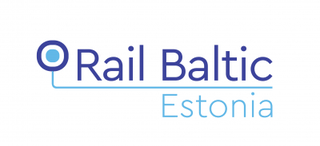The future of travel: how rail baltic is changing the game
Rail Baltic is a transformative railway infrastructure project designed to link the Baltic States with the rest of Europe. This ambitious initiative aims to create a high-speed rail network that will stretch from Tallinn, Estonia, through Latvia and Lithuania, and eventually connect to Warsaw, Poland. The project is set to revolutionize the way people and goods move across the region, offering a modern, fast, and environmentally friendly mode of transportation.
The strategic significance of Rail Baltic cannot be overstated. It serves as a vital link in the European Union's Trans-European Transport Network (TEN-T), which seeks to enhance the continent's internal and external connectivity. By providing a direct rail corridor through the Baltics, Rail Baltic is poised to strengthen economic ties, promote regional integration, and contribute to the EU's broader goals of sustainable development and cohesion.
Environmental Impact
As the world grapples with the urgent need to combat climate change, Rail Baltic emerges as a beacon of green transportation. By shifting a significant portion of travel and cargo transport from road to rail, the project promises to substantially reduce greenhouse gas emissions. This aligns perfectly with the values of environmentally conscious travelers and businesses who prioritize sustainability in their operations.
Rail travel is one of the most energy-efficient modes of transportation. Rail Baltic takes this a step further by incorporating cutting-edge technologies and sustainable practices into its operations. From electrified tracks to energy-efficient trains, the project embodies the future of eco-friendly travel, making it an attractive option for those who seek to minimize their environmental impact while exploring Europe.
Technological Advancements
The Rail Baltic project is at the forefront of technological innovation in the rail industry. With plans to implement state-of-the-art signaling systems, digital ticketing platforms, and advanced maintenance facilities, the network is set to offer an unprecedented level of reliability and convenience for passengers and freight operators alike.
Logistics companies stand to benefit immensely from the smart solutions that Rail Baltic brings to the table. The integration of digital tracking, seamless border crossings, and efficient cargo handling will streamline the supply chain, reduce transit times, and lower costs. This is a game-changer for businesses that require swift and reliable transportation of goods across Europe.
Economic Implications
The economic ripple effects of Rail Baltic are far-reaching. By enhancing accessibility and connectivity, the project is expected to stimulate investment, tourism, and job creation in the Baltic region. This influx of economic activity will not only bolster local economies but also contribute to the overall prosperity of the European market.
Businesses across various sectors will find new opportunities for growth and expansion thanks to Rail Baltic. The improved transport links will facilitate easier access to new markets, enable efficient distribution channels, and foster cross-border collaboration. This is particularly beneficial for small and medium-sized enterprises looking to scale up their operations and compete on a larger stage.
Enhancing Connectivity
The vision of a seamlessly connected Europe is coming to life with Rail Baltic. By bridging the gap between the Baltic States and the rest of the continent, the project is set to enhance the mobility of millions of people. Whether it's for business, leisure, or daily commuting, Rail Baltic offers a fast, reliable, and comfortable journey across borders.
For international commuters, Rail Baltic represents a significant improvement in their daily travel experience. The reduction in travel times, the comfort of modern trains, and the reliability of the service are all factors that contribute to a more pleasant and productive commute. This is especially important for those who travel frequently between the Baltic States and other European countries.
Future Prospects
Looking ahead, Rail Baltic has ambitious plans for expansion and integration with other modes of transport. This includes the development of multimodal terminals that will facilitate easy transfers between trains, planes, and automobiles, creating a truly interconnected transportation network. Such developments are set to further enhance the appeal of rail travel as the backbone of European mobility.
The long-term impact of Rail Baltic on travel and trade is expected to be profound. As the project progresses, it will not only redefine the transportation landscape in the Baltics but also set new standards for international rail travel and logistics. The promise of a faster, greener, and more efficient way to move across Europe is an exciting prospect for all stakeholders involved.








Comments (0)